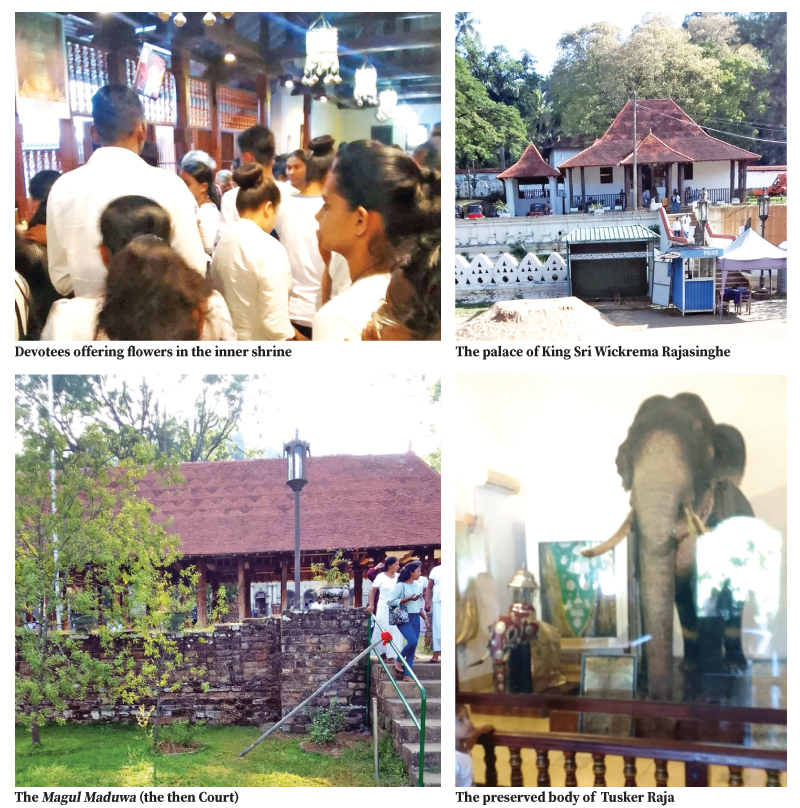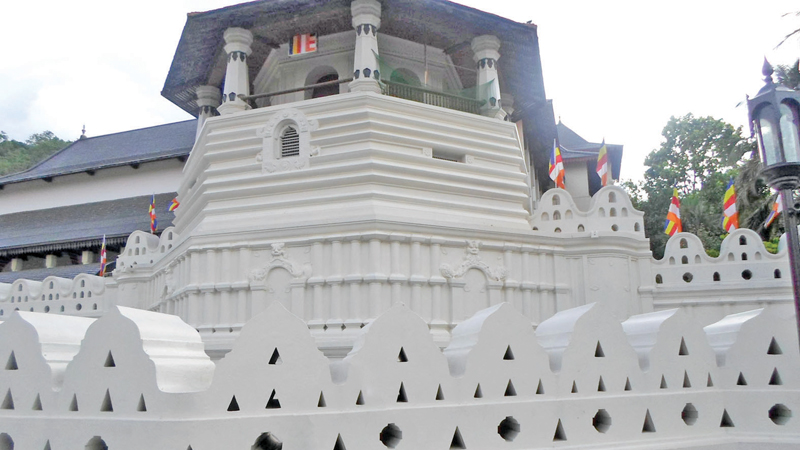The Temple of the Sacred Tooth Relic is a world- renowned place of worship where the left canine tooth of Gautama Buddha is enshrined. The temple, venerated by thousands of local and foreign devotees and tourists daily, was named as a World Heritage by UNESCO in 1988.
The temple, built according to the Kandyan architectural style, has a lot of values for Buddhists all over the world.
The temple is close to the ancient Royal Palace which is situated to the North of the temple and to the East of the forest reserve called Udawattakele; the Kandy lake known as “Kiri Muhuda” to the South and Natha and Paththini Devale to the West.
The Buddha’s Sacred Tooth Relic was first brought to Kandy during the reign of Wimaladharmasooriya I at the turn of the 17th century. He built a temple to house the relic but this was later destroyed. It was taken away for safety during a Portuguese invasion of Kandy and eventually recovered during the rule of King Rajasinghe II.
The present Temple of the Sacred Tooth was built by King Vira Narendrasinghe in the early 18th century and later extended and modified by subsequent kings. It is surrounded by a moat and low white walls with simple carvings. Its distinctive octagonal tower or “Pattirippuwa” was built in 1803 and houses a collection of palmleaf manuscripts.
The Sacred Tooth Relic is kept in a two-storey shrine which is covered with a golden canopy and fronted by elephant tusks. There is also a museum where many Buddha images are kept, most of them are gifts from foreign countries. Also displayed are paintings depicting various events in the history of the Sacred Tooth Relic. Thousands of devotees and visitors throng the shrine everyday to pay respect to the Sacred Relic, which is encased within a set of seven caskets made of gold and precious gems.
The preserved body of Raja, the majestic tusker that carried the Sacred Relic Casket in the Esala Perahera for over 50 years is kept in a separate building.
A replica of the Sacred Tooth Relic, together with its ornate and beautiful caskets is displayed during the “Esala Perahera” once a year. This is the island’s largest annual religious and cultural pageant, lasting for ten days with colourful and elaborate parades of dancers, drummers and elephants.







